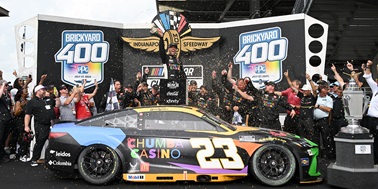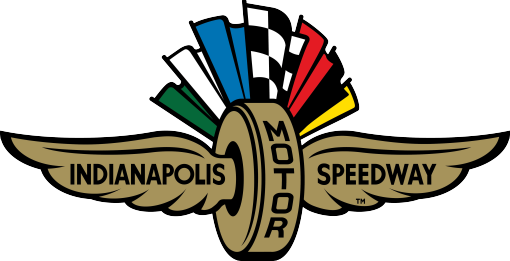The anticipated time difference is about 42 hours.
That’s how long Verizon IndyCar Series teams have from the checkered flag of Saturday’s INDYCAR Grand Prix to Monday’s opening practice for the 101st Indianapolis 500 presented by PennGrade Motor Oil.
Those accustomed to working late in the Indianapolis Motor Speedway’s Gasoline Alley can attest to how physically demanding it is to transform an Indy car from being set up for the 14-turn, stop-and-start, 2.439-mile road course to be ready for the flat-out, faster 2.5-mile oval.
“The car looks the same, but it’s pretty different,” said Bobby Rahal, co-owner of Rahal Letterman Lanigan Racing.
The cars differ in brakes, aero kits, rear wings, suspension, shock absorbers, gearbox setups and dampers, among other things. What does all that mean?
“It doesn’t constitute thrashing; we’ll just be really busy,” said Julian Robertson, Chip Ganassi Racing technical director. “The guys will start on prep Saturday night after the race. The race is quite late in the afternoon, which means it will all go late into the evening to get a head start.”
Take the brakes, for example. Verizon IndyCar Series technical director Kevin “Rocket” Blanch expects race teams to spend a great deal of time on getting these vital components right.
“On the road course, you’ll normally run the newest stuff you have,” Blanch said. “And if it’s used, they’ll machine it down and just get the faces of the rotors square to the pads. You want to make sure you’ve got 100 percent contact on the road course.
“They’ll be really worried about the (brake) temperature. The carbon brakes have an optimum operating range. They need to be hot, but not too hot and not too cold. There’s a range they’re shooting to keep that in. They’ll mess a lot with the brake ducts to try to make sure they’ve got just the right amount of cooling they need.”
Think about the 85-lap race with the three hard-braking zones before Turns 1, 7 and 12 on the road course. Then think about how the Indianapolis 500 drivers zoom into the turns at 230 mph and just let off the throttle, if necessary, as opposed to taxing the brake pads and rotors.
“The difference between that and going to the oval, on the oval we have minimum thicknesses on the rotors and the pads, so they’ll machine everything down to the minimum thickness for the rotation weight,” Blanch said. “Any weight that rotates is worth about three times of what non-rotating weight is. They’ll machine everything down and get it as thin as they can because the only time you hopefully use the brakes on the oval is when you’re pitting. Other than that, it’s just lifting off the throttle and letting the car in the corners.”
Rahal won the 1986 Indianapolis 500 as a driver and the 2004 Indianapolis 500 as a team owner with driver Buddy Rice. He starts rattling off by memory the checklist of changes needed.
“There’s the differential: You go from a limited slip to a spool for an oval,” Rahal said. The dampers are different. The wings are different. Shock absorbers are totally different. Brakes are different. Aero is different. It’s a different car, totally.
“Probably the most difficult is the gearbox. You kind of platoon those things. You’ve got them in rotation, so it’s not so bad. In a day, you can pretty much get it done, assuming you don’t have any problems.”
Chip Ganassi Racing switched engines to Honda from Chevrolet this season, which means trying to expedite the learning curve on an aero kit that while frozen from a year ago is more familiar to other teams. Robertson considers aerodynamics one of the biggest differences in the cars.
“The aero kit is totally different for the Indy 500 compared to the road course aero kit,” Robertson said. “There’s an awful lot of parts to build up, some of which we pre-prepare in advance. Right now in the workshop, we’re finishing some of the oval assemblies where we can.
“But some of the parts, just variations in the road course parts, until we’re finished running the road course we can’t start building some of the other parts up, particularly in terms of spares and nose boxes. We have to wait until we finish the road course completely before we can start rolling into some of the oval prep.
“So aerodynamics is a massive man-hour drain. Suspension and the mechanical setup on the cars, the cars are designed so a lot of those parts are the same, but the setup being totally different on the oval compared to the road course means you have to change quite a lot of things around. Luckily, we run enough ovals that we have it fairly well documented what we need to change. The guys can kind of get into that while the car is still being built up. When it goes on the setup pad, it will be pretty close for the oval and just need a little dialing in.”
Robertson mentions another time-consuming switch.
“Dampers are a big man-hour drain because the damper specs we run at Indy are very different than what we run on the road course,” he said. “Indy is smooth, you’re going maybe 230 mph. Road course, way slower, totally different characteristics on a road course, so the damper guys have a lot of building to do between finishing the road course and rolling it out on Monday for the oval.”
Chip Ganassi Racing is one of the series powerhouse teams, led by four-time series champion Scott Dixon and 2004 series winner Tony Kanaan, each of whom have won the Indy 500. Owner Chip Ganassi has celebrated five Indy 500 victories in addition to 10 Indy car series titles, which means excellence is expected.
“Particularly for the Indy 500, everything has to be perfect right away,” Robertson said. “We’ve got to roll through tech, we’ll try to get through tech Monday before we roll out and start running. And for us, with the Honda aero kit, it will be the first time we’ve run the Indy stuff through tech because the Indy 500 has a number of aero parts that are exclusive to it, that you don’t run on any other ovals.
“There are Indy rear wings that are Indy only for both Honda and Chevy. All of that stuff, the first time we’ve been through tech with all of that will be Monday.”
Robertson paused, then summarized, “We’ve got a lot on our plate.”
And because it’s routine, they plan for it. Team manager Barry Wanser already has organized where team members will work after the race, either in Gasoline Alley or at Ganassi’s Indianapolis headquarters.
“On Saturday, once the checkered flag drops, that just means the work starts,” Robertson said.
Visit IMS.com to purchase tickets for INDYCAR Grand Prix and the 101st Indianapolis 500 Presented by PennGrade Motor Oil on Sunday, May 28, and for more information on the complete Month or May schedule at IMS.
Teams To Start Rapid Race To Convert Cars for Oval After INDYCAR Grand Prix

That’s how long Verizon IndyCar Series teams have from the checkered flag of Saturday’s INDYCAR Grand Prix to Monday’s opening practice for the 101st Indianapolis 500 presented by PennGrade Motor Oil.
Latest News
View All News
Fox Corporation Acquires One-Third Interest in Penske Entertainment
Strategic investment, partnership includes a multiyear extension of INDYCAR's media rights with FOX Sports.

Public Days Updated for Indianapolis 8 Hour at IMS
Fans can enjoy two nights of action with headlights on at dusk Oct. 16-18 at the Racing Capital of the World.

Wallace Hangs On To Win Dramatic Brickyard 400 in Double Overtime
Bubba Wallace (photo) became the first African American to win the NASCAR Cup Series crown jewel race at IMS.
